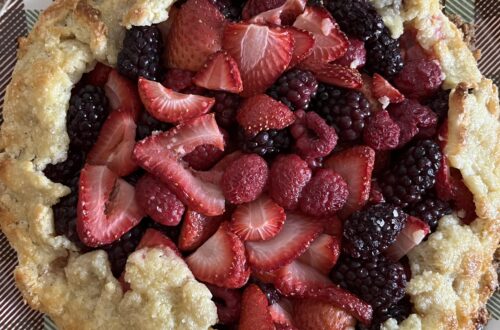One thing about me is that I love cheese of all kinds. Rare is the cheese that is not for me (even blue cheese has its place, in my opinion!). The other day, my husband surprised me with some goat cheese he picked up on his way home, just because he knows I like it. Is cheese a love language? I think it might be, in my house. [Click here to skip to the recipe]
Another thing about me is that I like to have back-up dinners ready to go in the freezer. When I make chili, meatballs, or stew, I make enough to freeze a few meals’ worth. Sometimes I freeze taco meat, enchilada filling, fajita fixings… the list goes on (we are also big fans of Mexican food here, with or without cheese).
Up until recently, I didn’t have a lasagne recipe I was truly happy with in terms of reliability and freezability. I’m going to tell you the main reason why, even though it’s a bit embarrassing. I had, until recently, never bothered buying regular lasagne noodles. I always, always bought the ‘no boil’ ones because I just didn’t want to take the time for what felt like an ‘extra’ step. I was sure I could, with the right combination of fillings and the right amount of sauce, get the no-boil noodles to cook evenly and turn out nicely. For what it’s worth, I did, sometimes, but it wasn’t reliable, and did not freeze as well as I’d like. Maybe this has not ever been an issue for you, in which case I invite you to try my recipe with no-boil noodles and tell me how it turns out! (For that matter, I still have some in my pantry, so I may have to try it myself!)
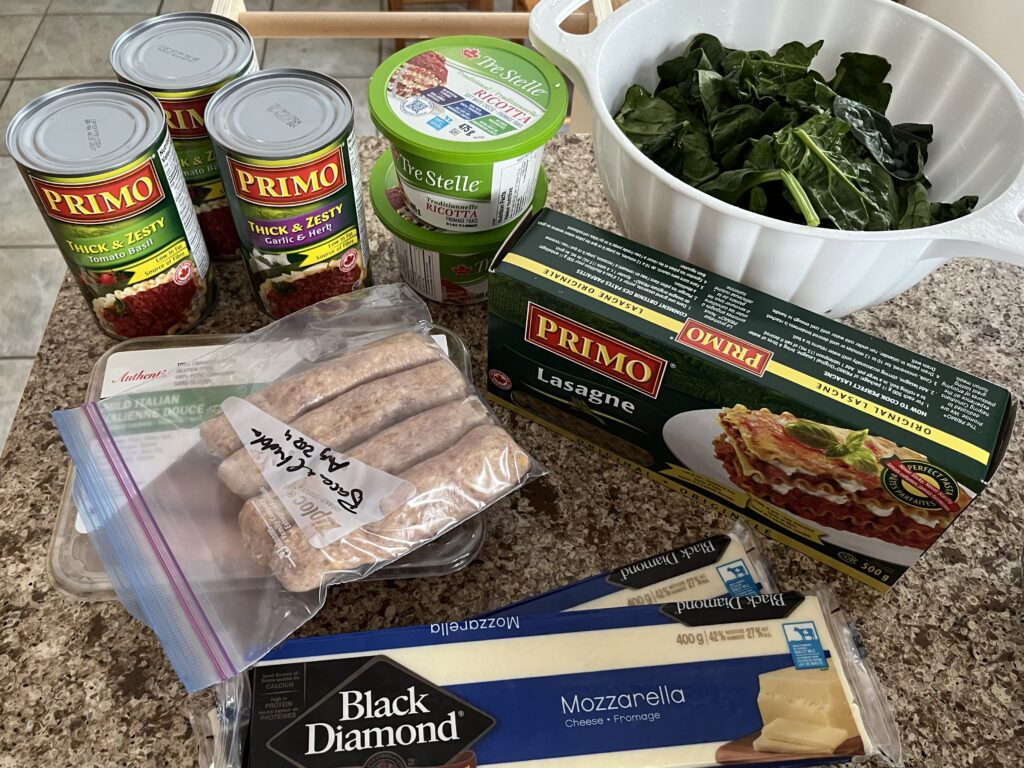
Regardless, after trying a few recipes, I’ve come up with my own version that is super simple, makes two full-size lasagnes (one to eat and one to freeze), and only needs 6 ingredients. It’s inspired by a family recipe, but updated to my preferences and adjusted to make two full lasagnes every time. I chose sausage as the meat, since it’s already nicely flavoured and that means you can skip the additional seasonings that you’d really need if you were using plain ground meat. As to cheese, I like to use mozzarella and ricotta, but if you prefer cottage cheese, you could absolutely substitute it.
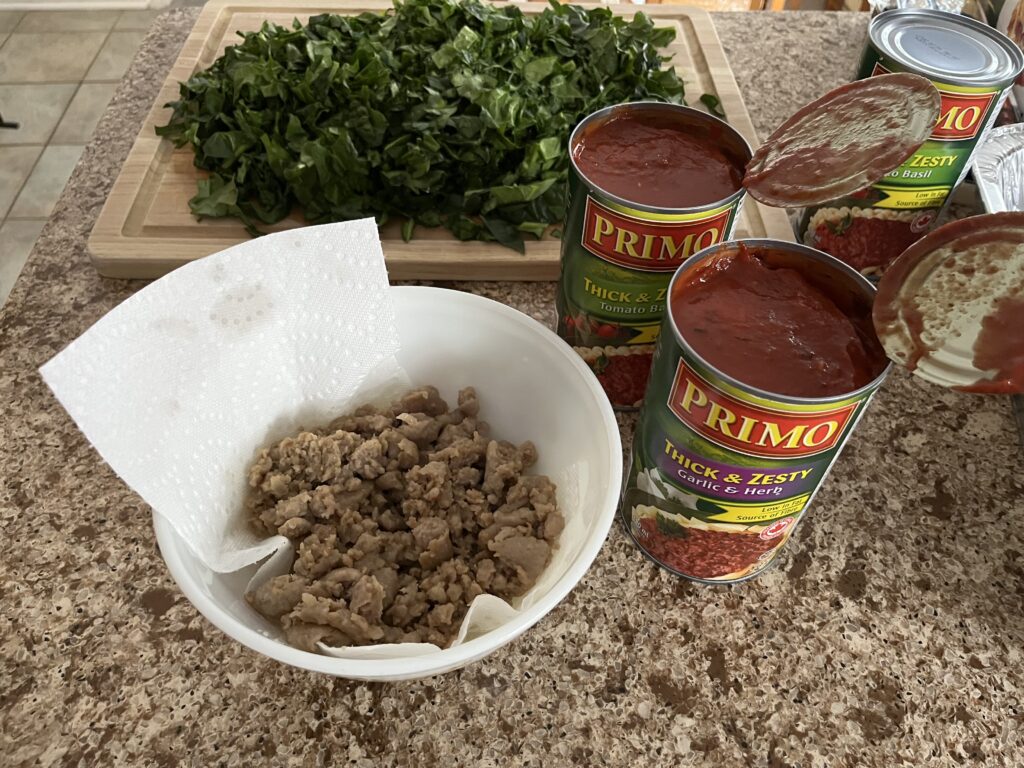
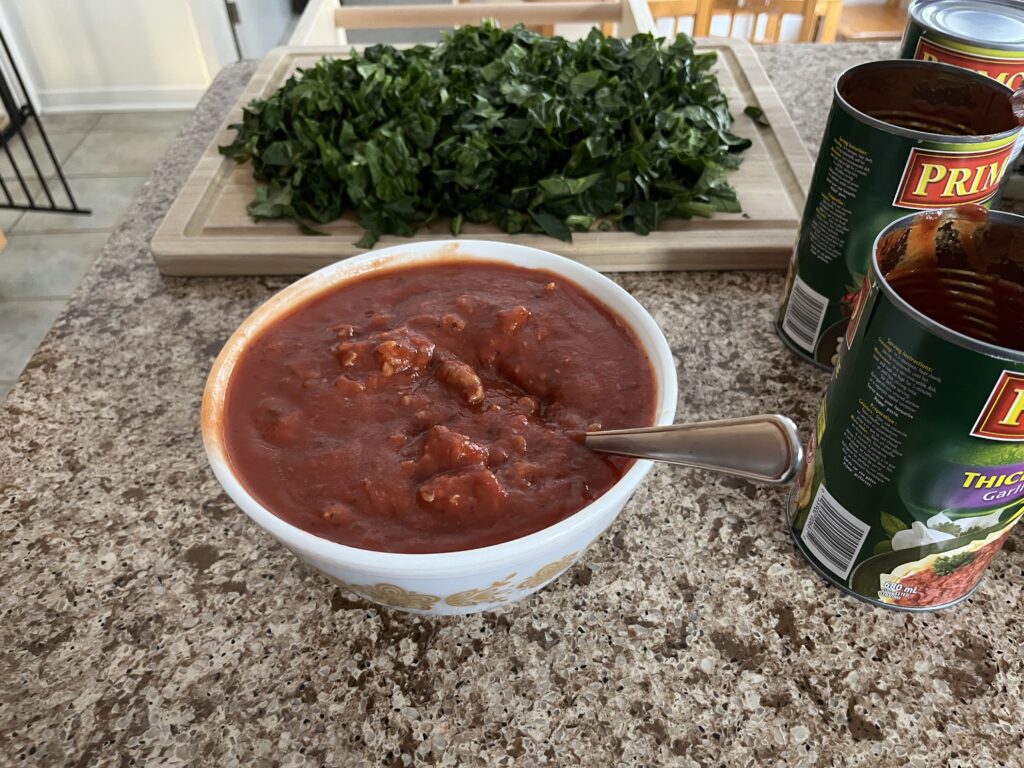
A great thing about this recipe is that the quantities are fairly flexible if your local packages are a little different in size from mine. I’ve included the exact quantities I usually use for your reference, but don’t worry about matching exactly.
You’ll also need two 9×13 pans (I used one glass and one foil, but you could use two foil), some aluminum foil, and plastic wrap for freezing the lasagne.
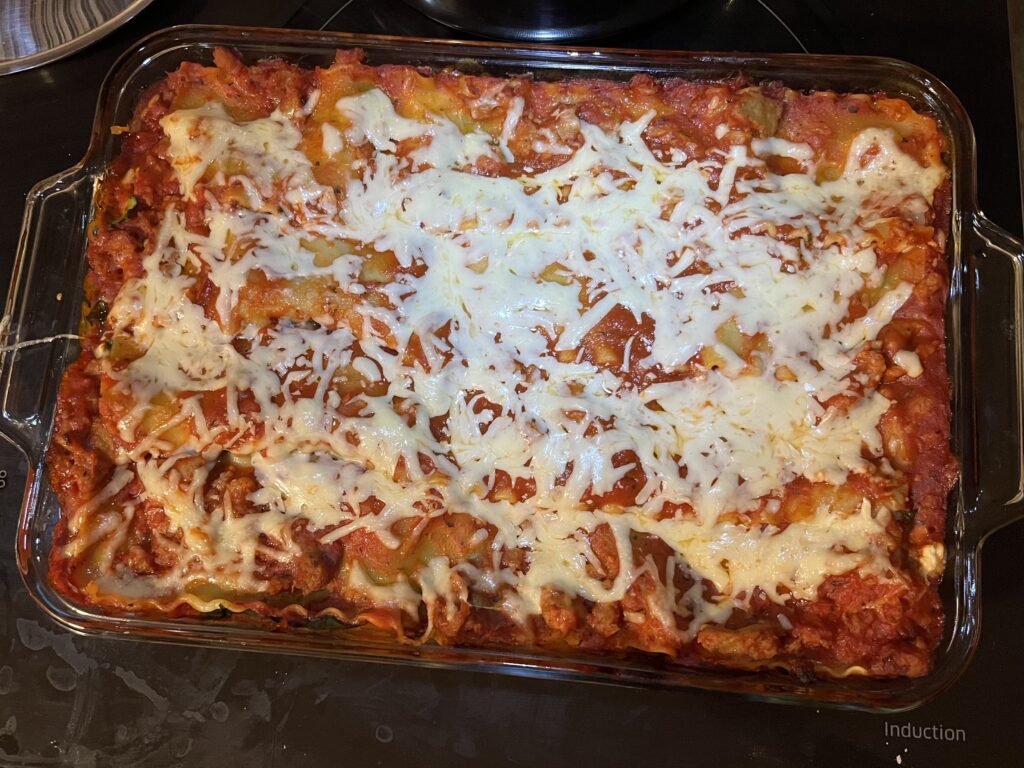
Easy, 6-Ingredient Lasagne
Yield: 2 9×13 lasagnes
Ingredients:
- 1 500g box of lasagne noodles
- 3 ~680mL cans or bottles of marinara or your preferred sauce
- 2 ~475g pots of ricotta
- 1 400g block of mozzarella (not two as pictured, oops!), shredded
- 1kg (2.2lb) of sausage meat of your choice
- 1 large bag (~300g) of spinach, rinsed and chopped
Instructions:
- Preheat the oven to 350F.
- Boil water in a large pot. Once it’s boiling, add a generous dash of salt, followed by your noodles. I find my largest pot is a bit tight for two lasagnes worth of noodles, so I sometimes do this in two batches. Follow the directions on your package to cook to al dente, then drain and rinse with cold water to stop the cooking process.
- Heat a large frying pan on medium-high. I used a little cooking oil here but the sausages will have lots of grease in them so you may or may not need it. Remove your sausages from their casings, and fry, breaking the pieces up, until cooked through. I usually do this in two batches, draining the fat off after each batch.
- Mix the sausage and pasta sauce. I did one lasagne at a time, so I mixed 1.5 cans with 4 of the 8 sausages.
- Assemble the lasagnes: Spread a little sauce on the bottom of each pan, then place up to 4 noodles (as many as fit – my glass pan only fits 3 on the bottom layer and then switches to 4; the foil pan I used started at 4 and stayed that way). Top with sauce, then half a tub of ricotta, a little mozzarella, and a quarter of the spinach. Repeat noodles through spinach, then place one more layer of noodles and sauce, and top with more mozzarella. If you’re a visual person, see below for pictures of each layer.
- Bake one lasagne: Tent some foil over the pan, and bake at 350F for about an hour or until heated through. You can broil it for a few minutes with the foil removed if you like it browned on top, or you can just let it stand about 20 minutes, or as long as you can stand, before you dig in! If you can’t wait, it’ll still be delicious, it just won’t have as much structural integrity as you might like for a picture perfect slice. (In my house, we rarely wait 20 minutes.)
- Freeze one lasagne: Once the lasagne that is destined for the freezer is fully cool, wrap it in plastic wrap followed by a couple of layers of tin foil. Write the instructions on top, then freeze on a baking sheet to ensure it retains its structural integrity (who knew I’d use that phrase twice in this recipe?). Foil pans are not as sturdy as glass pans!
- Instructions to defrost and bake your frozen lasagne: Place in fridge to defrost overnight, then tent with foil and bake (on a tray for stability!) at 350 for at least an hour or until heated through.
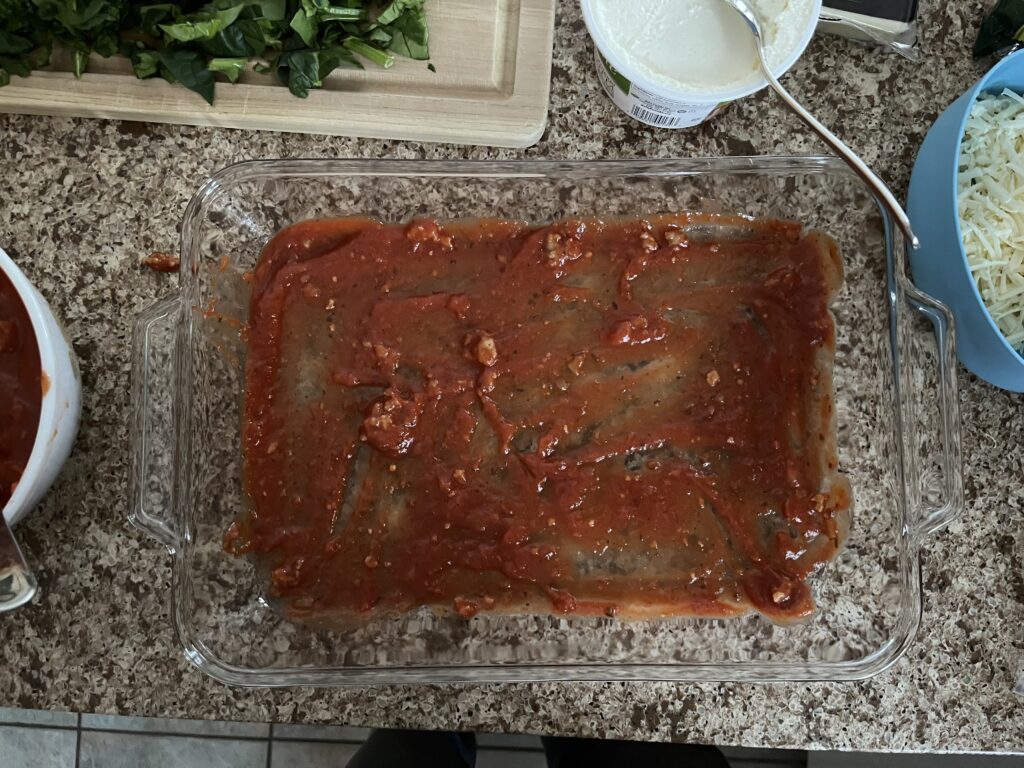
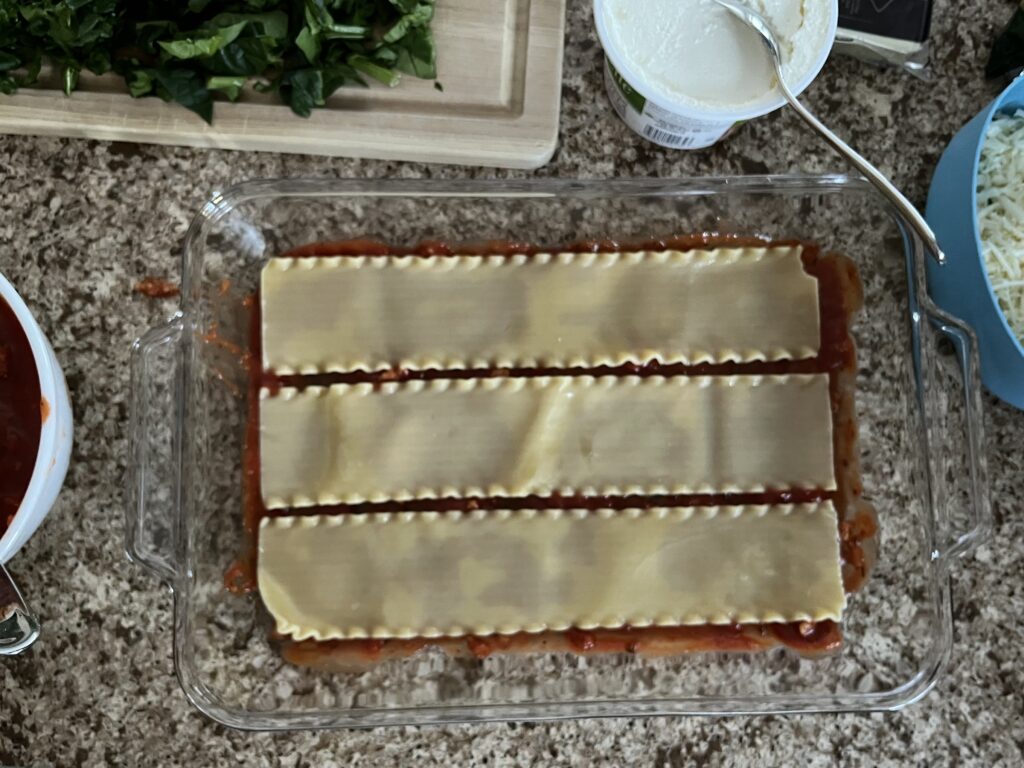
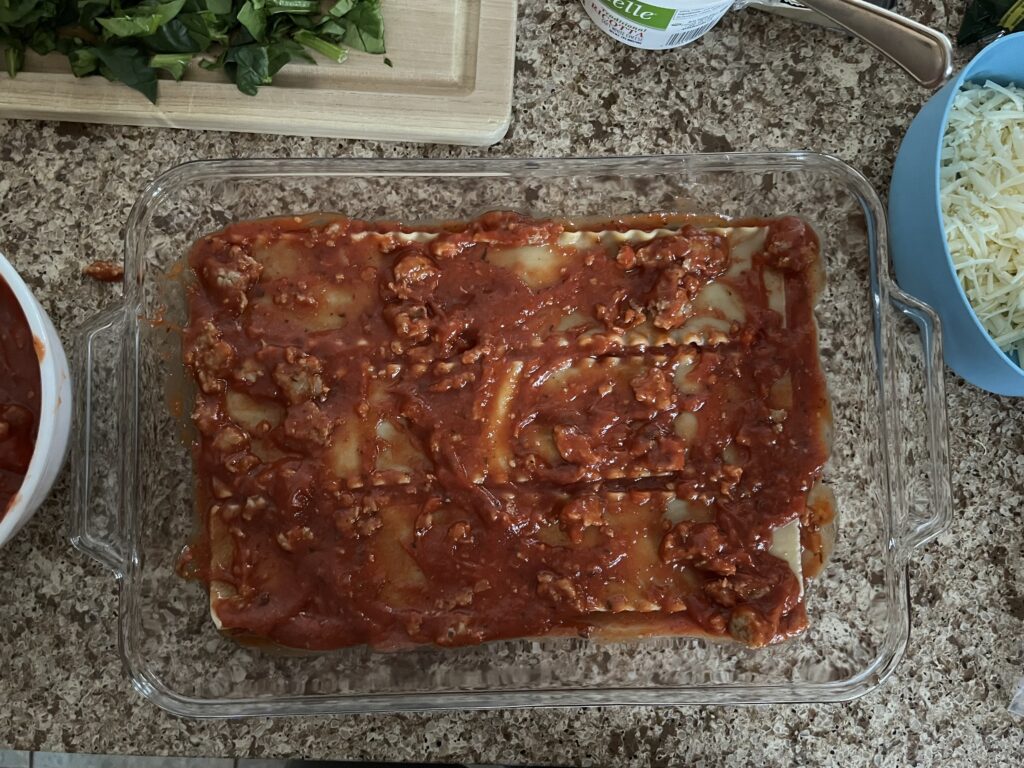
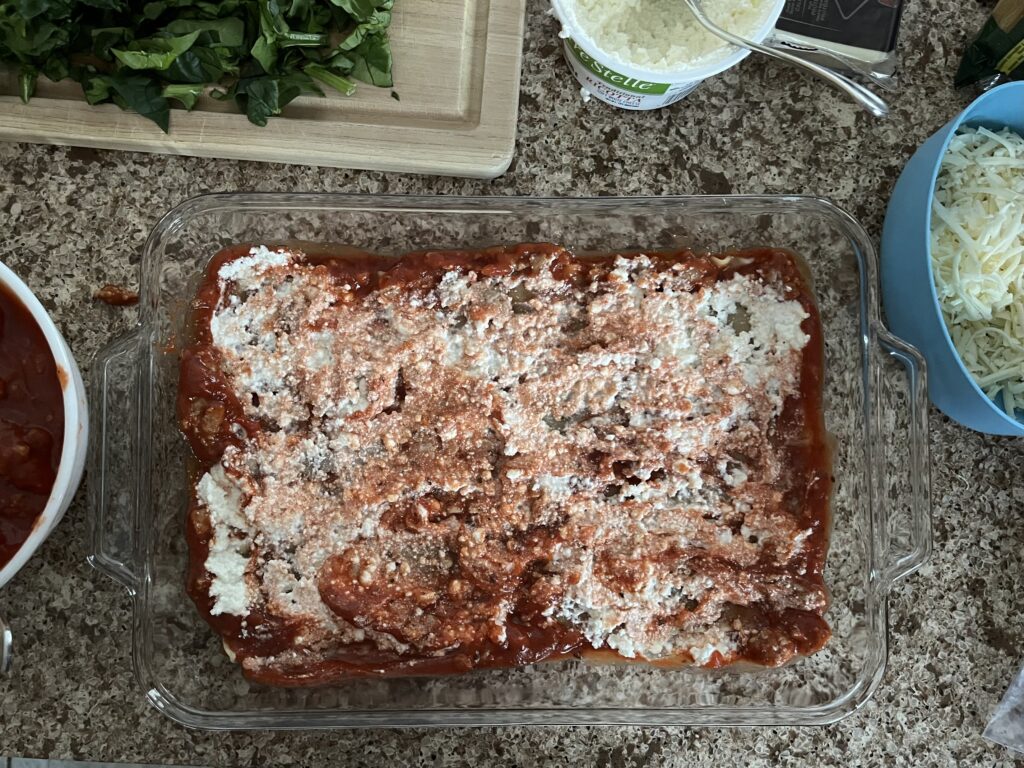
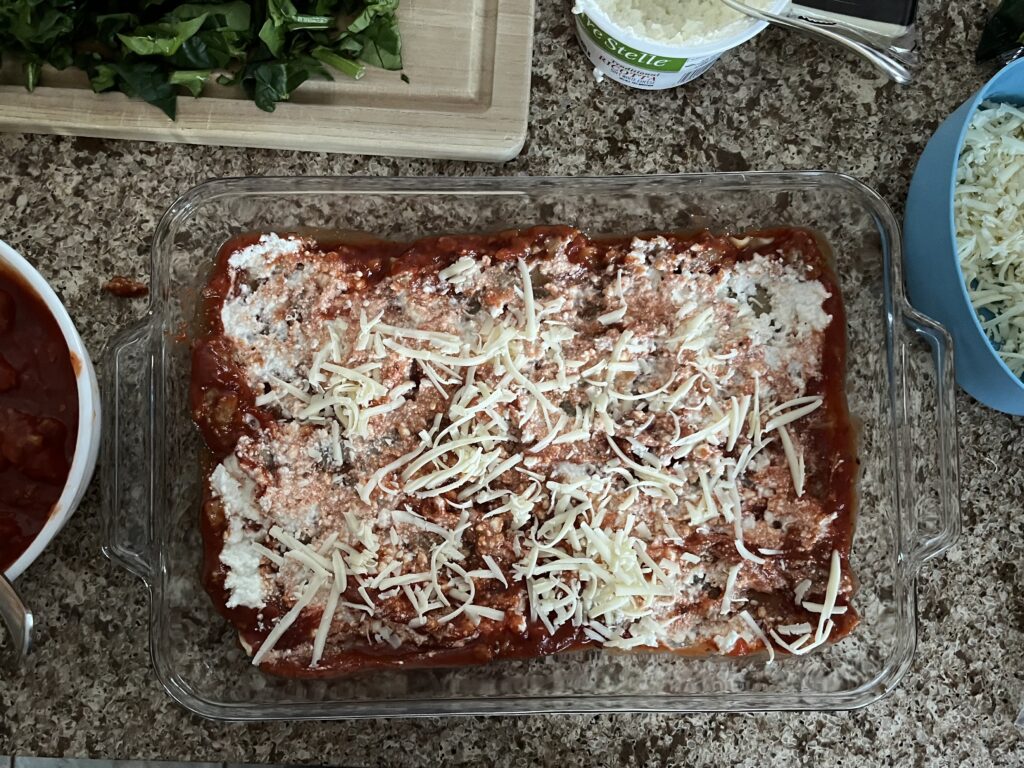
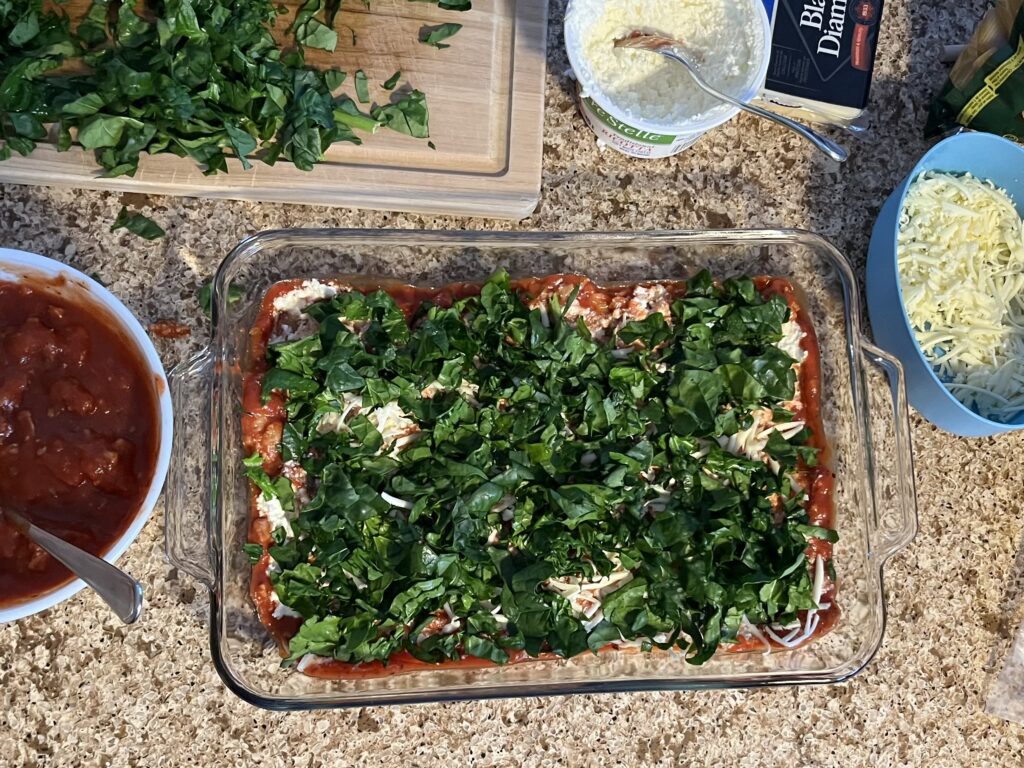
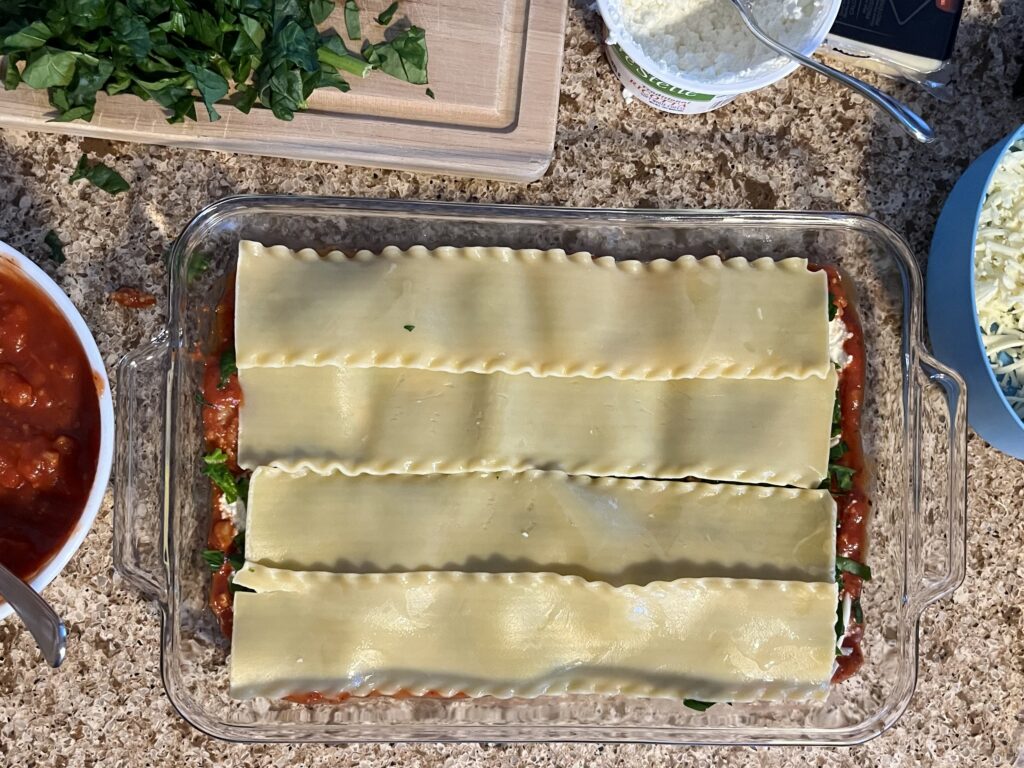
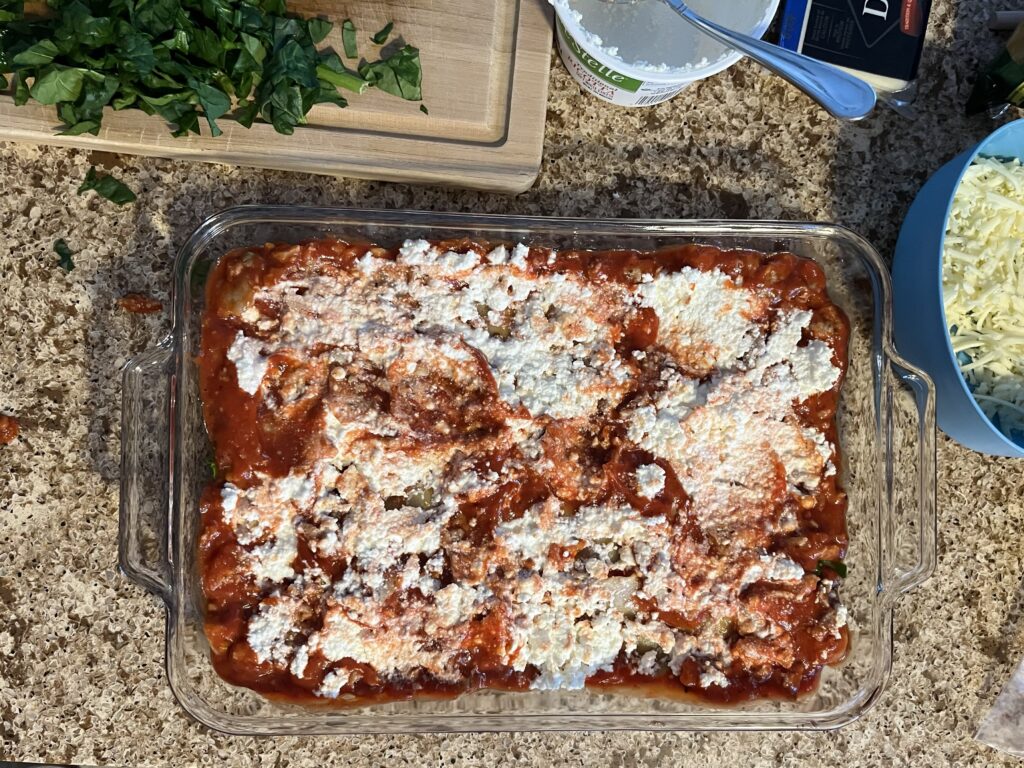
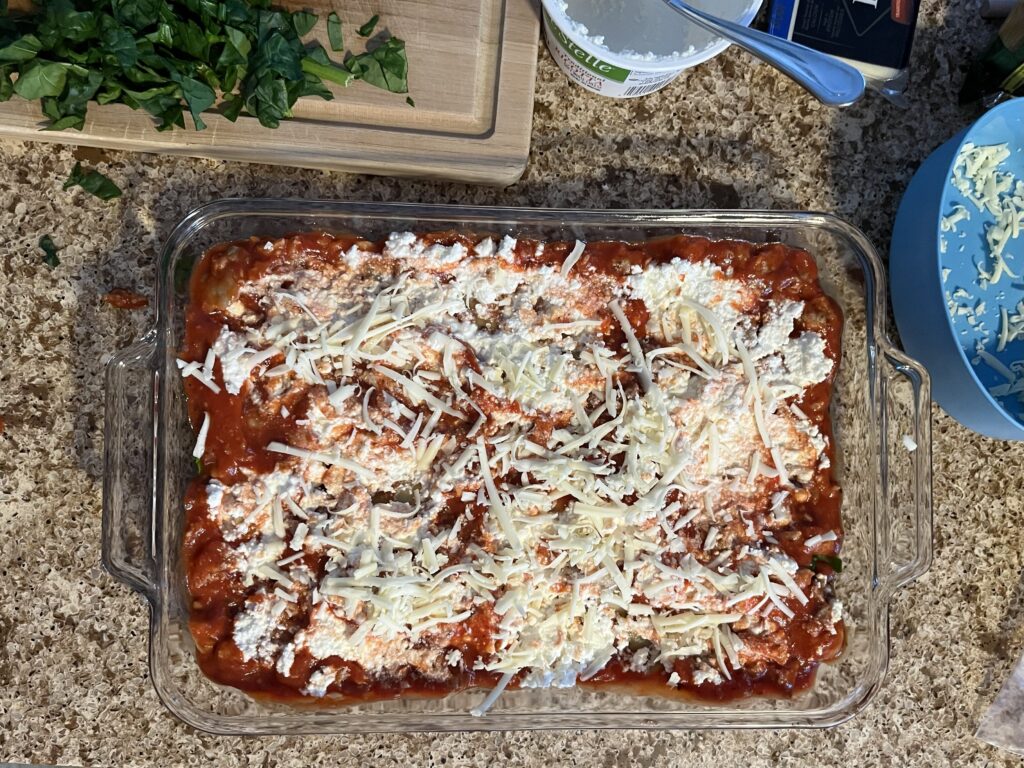
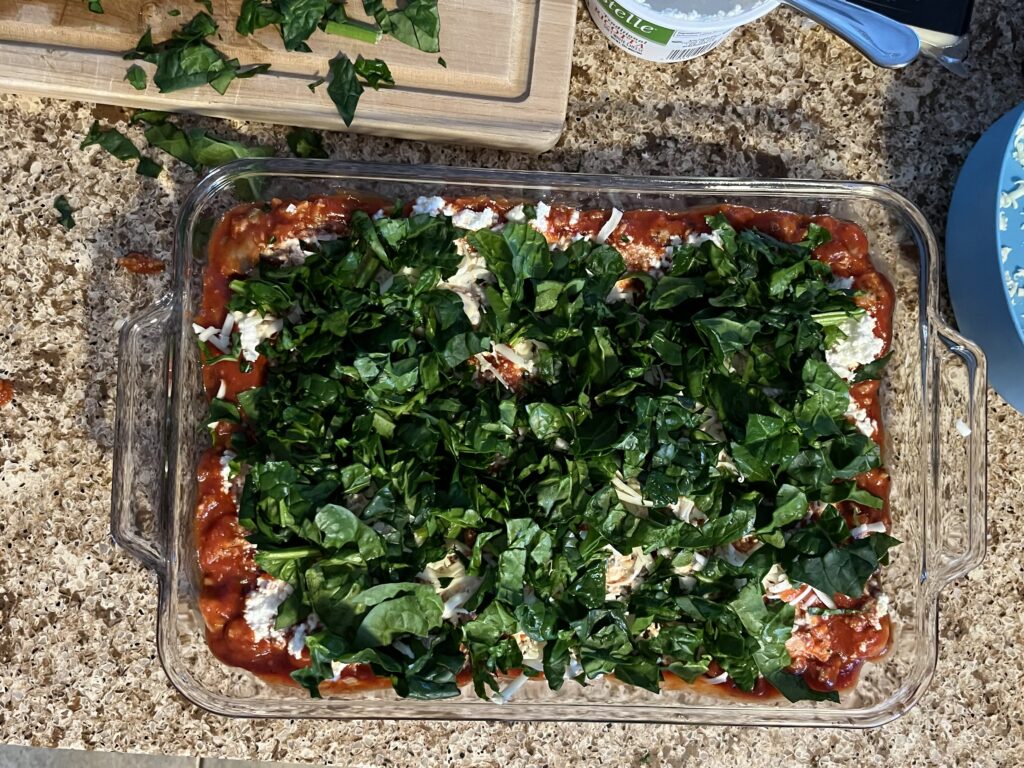
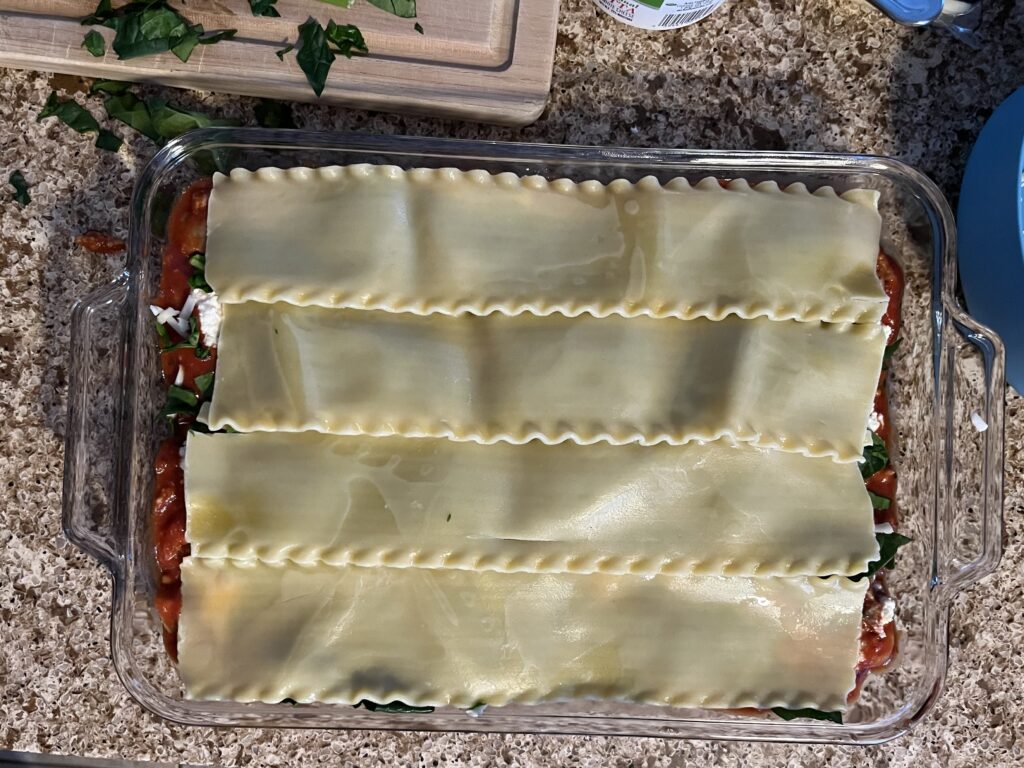
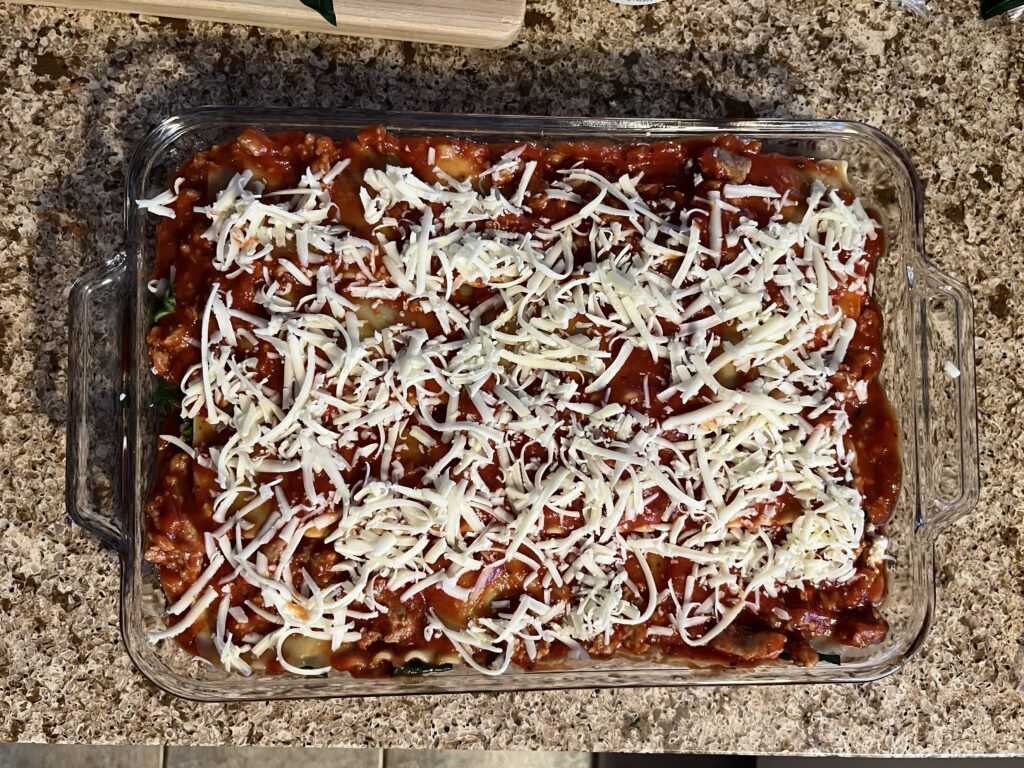
Note: You can also freeze your lasagne in a glass pan, if your glass pan is freezer safe. Be doubly sure your pan is fully cool, though (I might even put it in the fridge first to get it as cold as possible before exposing it to the freezer’s temperature), and be sure you defrost it very well before popping it in the oven. You could also line your pan with parchment paper, so that you can remove the lasagne from the pan once it’s frozen. This frees up the pan, and allows you to simply pop it back in that same pan when you’re ready to defrost the lasagne. Parchment paper is oven safe, usually up to 425F (check your package first!), so this is a great method if you have two glass pans of the right size!



